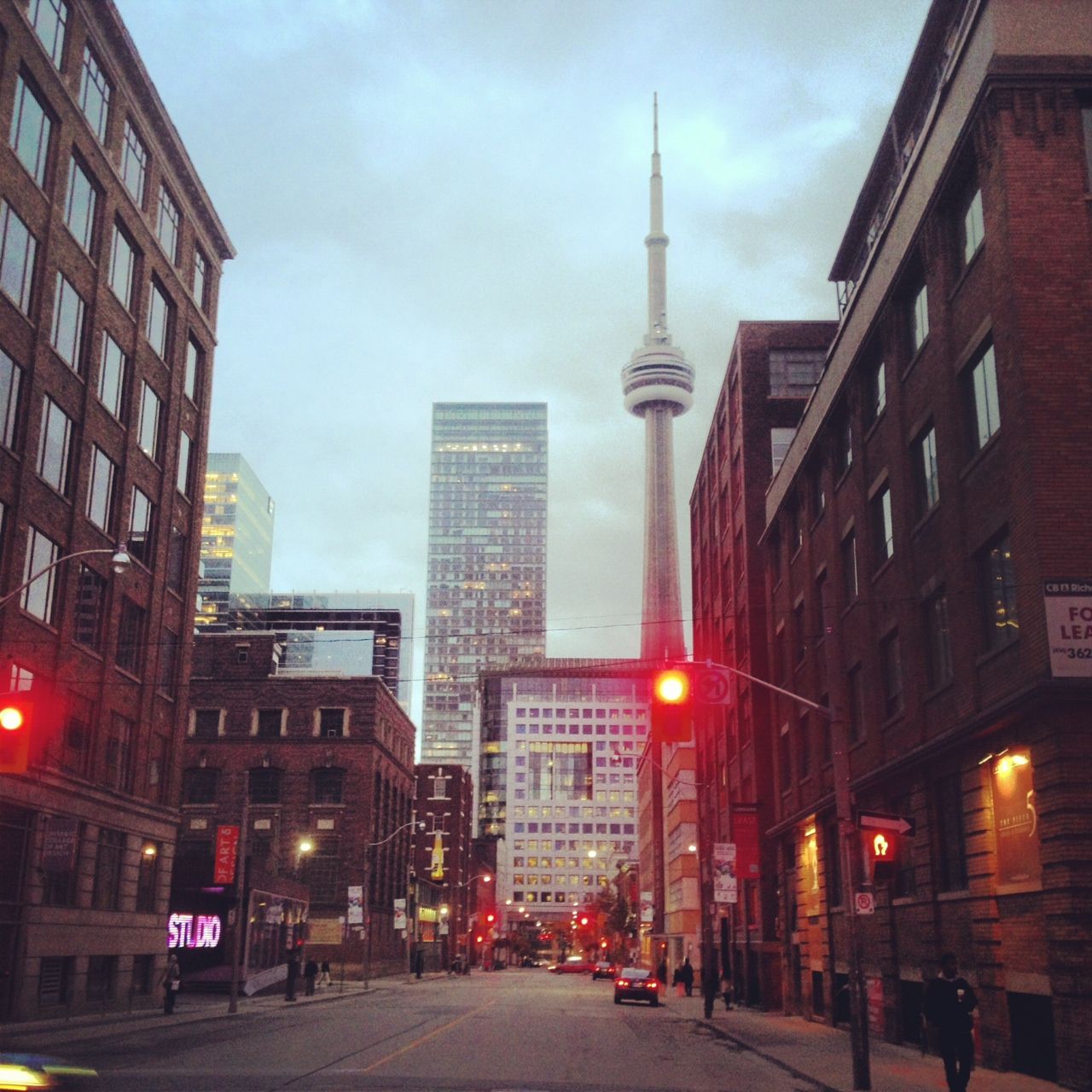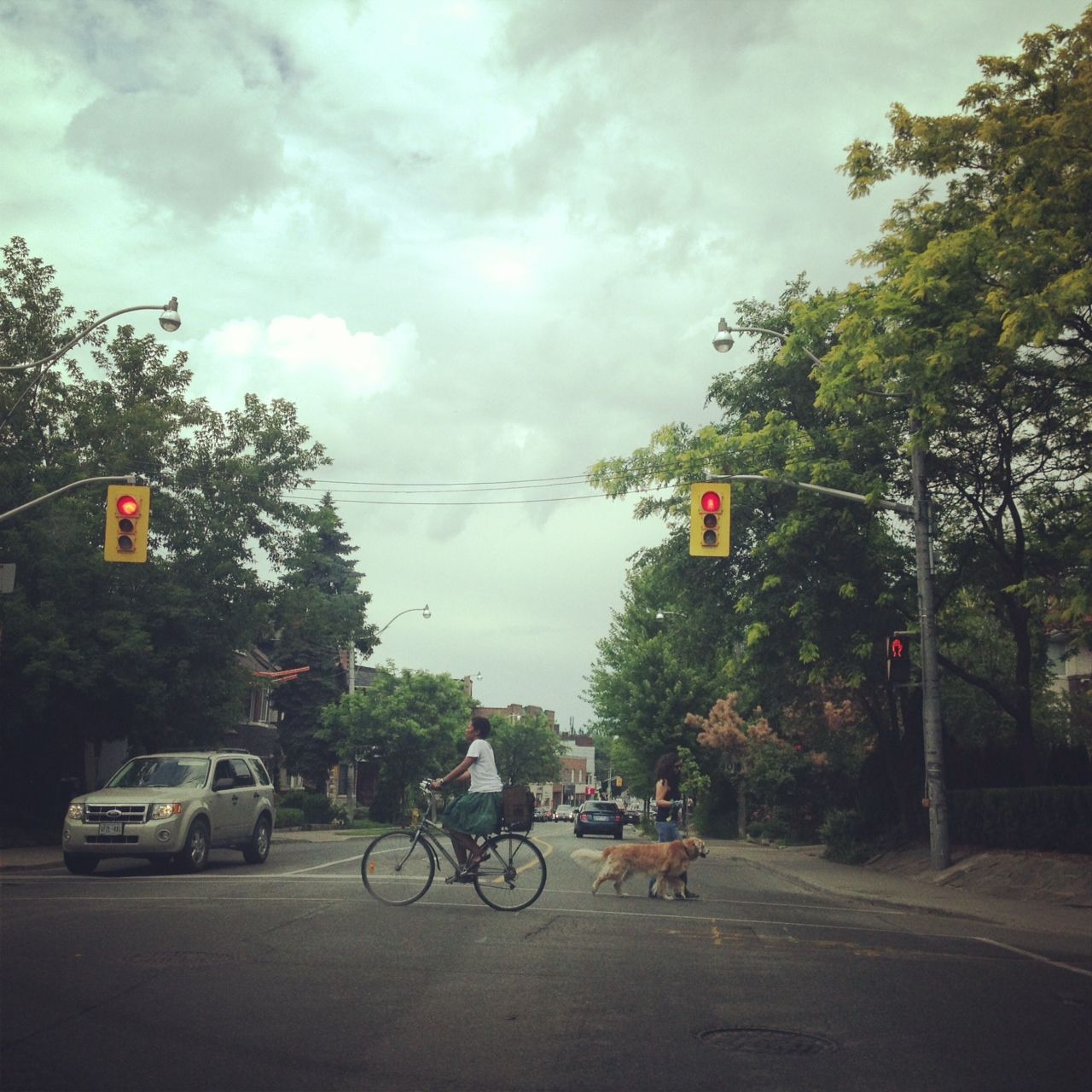Last Chance to Catch NYC's Holiday Notalgia Train
We met the voices of the NYC subway on our nostalgia ride this weekend!


Toronto is seeing a shift. Young professionals and empty nesters are being drawn to downtown as part of a North American trend where city cores are being re-invented. No longer does the suburban home with a garage constitute as “living the dream.” Living in a small space in the heart of downtown close to transit, grocery stores and theaters is the dangling carrot for the “eco-boomer” [born between 1972 and 1992] generation.
On a map in the city planner’s boardroom office, Toronto is divided into four districts. Chief Planner Jennifer Keesmaat says Toronto has reached a fork in the road and is facing a critical period ahead in urban planning. She’s devoted a planning committee to each district. Inside these districts lives a population of 700,000 residents–the size of five Canadian cities. Toronto has four of them within the downtown core. Geographically, Toronto is 613 km wide; five times the size of Manhattan. It’s a city of ravine systems and parks and waterways too. In each district there are transit woes and planning issues.
“There’s a persistent challenge. Is Paris done? No. We have to find ways to accommodate growth and we need to respond to growth,” Keesmat says. “Different parts of the city requires different planning.” The City of Toronto predicts they’ll hit three million people by 2020 and the GTA is expected to boast six million. The Founding partner of Office for Urbanism envisions handfuls of key players shaping Toronto’s future – and that’s a good thing. “The city will be shaped by different players coming together to complete a common vision” she said. “We need to have more conversations about this moving forward. We need to look at best practices elsewhere. We need to take risks and push to take risks — It’s a risk not to take them.”

Toronto has the highest number of developments under construction in North America. Consider these number of developments: Toronto (148), Mexico City (88), New York (86) and Chicago (17). If you break down the people-to-building ratio, it reads something like this: 1439:1 (figure sourced by Dumitru Onceanu, from Urban Toronto.ca); New York’s ratio is 1317:1.
“Some of the things we already know will work, because it’s best practice and has worked elsewhere,” Keesmaat said. “Trying to find a balance will be the challenge. If we are going to add urban density, the trade off would be open space parkland. But the biggest hurdle is political will – making it happen.”
Armando Carbonell, chairman Department of Planning and Urban Form, Lincoln Institute of Land Policy says that the word “density” is more often than not, a term that is misunderstood.”There is such thing as good density,” he said. “Most people don’t know density when they see it. Dense cities can actually be attractive and desirable.” A book written by Julie Campoli, Made For Walking, uses Toronto’s mixed-use neighborhoods as an example of how local characteristics and density can work together to make a world class city. Density, Carbonell believes, can still exist, as long as it’s mapped with transit and infrastructure to accommodate it.

A 2010 US Census cites Los Angeles as the most densest metro in the U.S., with 7,000 people per sq. mile. San Francisco followed with 6,300. New York City was ranked fifth with 5,300. According to the 2011 Canadian Census, Toronto metro has less than 2500 per square mile although the downtown population has tripled in the last five years. “LA is one of the most densified cities in the world. It is more urban in character with a huge investment in transit to change how people move around the city,” said Carbonell. ” In terms of transit systems, for the most part, Toronto and the eastern U.S. resemble European cities. What I keep hearing is that transit is not sufficient in Toronto. And it’s true. They’re not taking advantage of their density.”
The City of Toronto has been busy planning for the future with planning projects that include the Avenues and Mid-Rise Building and Study , The Eglinton-Scarborough Crosstown Planning Study, but also trying to develop new policies that would accommodate more people in smaller spaces, and researching where the city is growing.
In contrast Carbonell points out, Vancouver has added 27,000 people in last 10 years and currently has 100,000 downtown residents. Of the significant developments, they opted for a podium building style that preserved city views, brought in more light and added better air quality. They added people to their downtown core, but added no cars to the system.”You’ll find though, outside Vancouver, you’ll find people in cars, so it’s not perfect in the regional system,” he said. “With Toronto’s long term transit plans, it is possible to add people with no cars.”

Solly Angel, currently the principal investigator in a global study of urban expansion that has been financed by the World Bank, the National Science Foundation, NASA, and lately the Lincoln Institute of Land policy, says people are still playing with ideas about cities that are not true. “Generally speaking, logic of public opinion doesn’t want the city to expand. Toronto is growing. Pockets of people don’t have a voice such as newly weds and newly arrived – they are weaker politically than home owners,” he said. People have strong resistance to change.”
Angel said the challenge for city planners is that people’s movements through a city are unpredictable. They bob and weave wherever they feel like and therefore it’s futile to fathom what people need.He said to shape a city, he’d rather choose 100 acts of repairs over one large project. One idea he proposed was increasing density by adding a flat to an existing property, but that, he pointed out, would require a change in the building regulations which the city can’t do. “Toronto has good grid, good public space and parks, but it can improve on repairs to modify shape and changes,” he said. “The city has to be more experimental. They need to try things. There needs to be more flexibility to allow communities and civic groups to be experimental and not have rigid laws.”
Justin Robertson is a Toronto-based journalist. His work has been featured in the Globe and Mail, National Post and The Walrus. He writes about urban affairs issues. You can follow him on Twitter @justinjourno. Unless otherwise noted, all quotes are sourced from first-person interviews by the author.
Subscribe to our newsletter